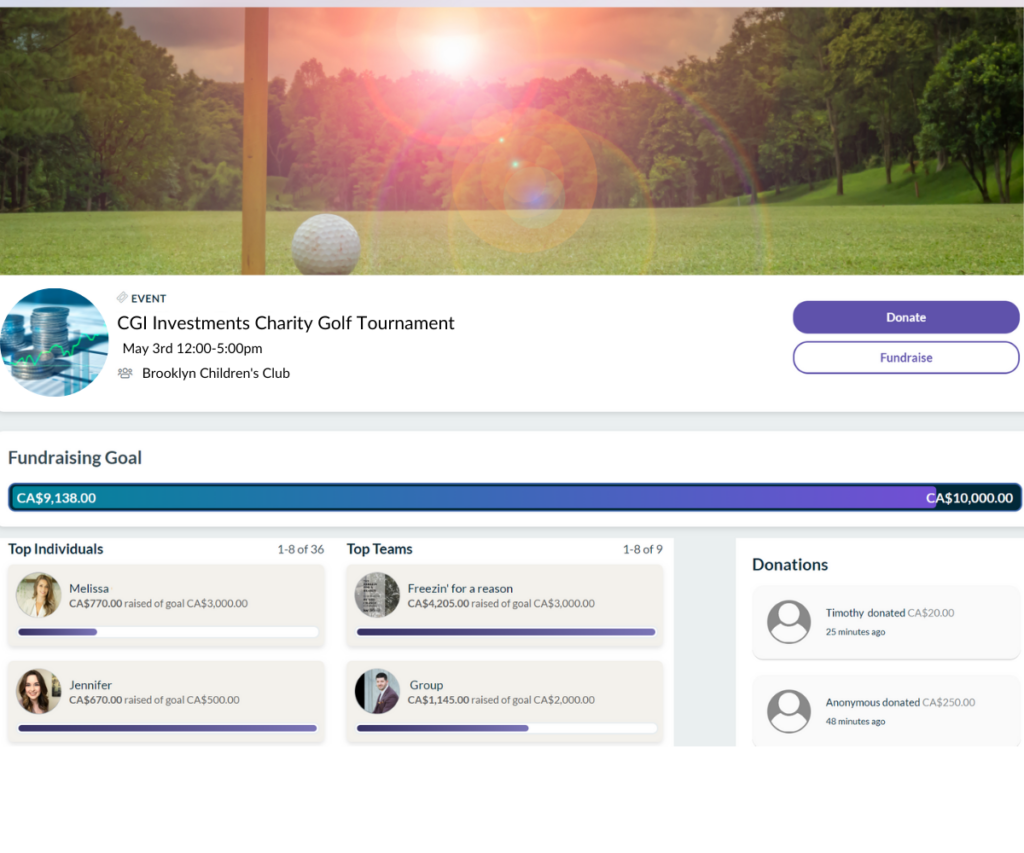Attributes of a strong brand reputation: authentic, unique, and trustworthy. To achieve this level of brand reputation—that oftentimes, money often can’t buy—companies must aim to be socially conscious.
To be a socially conscious organization is to balance purpose with profit, taking actions that drive positive social change rather than actions focused just on driving revenue.
Why building a socially conscious organization is important?
Consumer appeal: Consumers want to buy from companies that care about the greater good. 33% of consumers show their loyalty to brands they believe have social impact programs in place that enhance social good.
Investor appeal: Investors see long-term value in companies committed to making the world a better place. 73% of investors state that an organization’s efforts to improve society contribute to their investment decisions.
Employee appeal: Job seekers are attracted to purpose-driven companies. As 64% of individuals won’t take a job unless that company has strong CSR values.
How to improve brand reputation by becoming socially conscious
1) Strategize social good actions
In the world of social impact, your organization’s vision will be along the lines of “Helping to make the world a better place by enacting change.” But the how behind “How will we accomplish this vision?” lies in the actions you will take.
Socially responsible actions can include volunteering as a company picking up trash at your local beach or organizing a peer-to-peer fundraiser where your employees can fundraise in teams (or individually). These highly impactful initiatives are a great starting point to give back and make a difference, tackling social issues that are prominent in your local communities.
While this step is part of the brainstorming phase, jot down several social good actions that are attainable for your organization based on budget, timing, and human capital.
2) Choose nonprofits and charities
Behind every volunteer day, fundraiser, or donation is a nonprofit or charity that will be the recipient of your support. With thousands of causes in need of assistance, select a few causes across different focus areas your organization (and its employees) find of interest.
A survey can be distributed to employees, asking them to check off which focus areas they are interested in. After all of your employee’s responses have been submitted, tally up the top three focus areas that were the most selected. Focus areas often include:
- Arts & Culture
- Children & Youth
- Environmental
- Hunger
- Crisis Support
- Animals
From there, choose two nonprofits or charities (one in each of the focus areas selected) that your organization would like to support throughout the year. For example, if the Environmental focus area was selected, partnering with the Greenpeace Fund could be a well-suited charity to partner with. Next, send a simple outreach email to each cause to express your interest in a partnership and be sure to gain approval on their end.
3) Execute social good actions
You have determined social good actions you want to take and causes you want to partner with. Now comes the time for the execution phase. Create a matrix similar to the one below, assigning a social good effort to each cause that you support:
- Charity/nonprofit #1: Smith’s Food Bank
- Social good effort: Corporate donation
- Goal: $5,000 donation
- Time: Q1
- Tactics: Make a one-time donation online to Smith’s Food Bank.
- Charity/nonprofit #2: Green Future Charity
- Social good effort: Company-wide volunteer event
- Goal: 50% employee participation rate
- Time: Q2
- Tactics: Choose a date, time, and location to host the volunteer day. Create a volunteer event page two months in advance to notify your employees of the opportunity and track volunteer registrations.

- Charity/nonprofit #3: Brooklyn’s Children’s Club
- Social good effort: Peer-to-peer fundraiser
- Goal: $15,000 fundraising goal
- Time: Q3
- Tactics: Create a main campaign page two months in advance of your fundraiser’s expected end date. Encourage employees to create their own pages (individually or in teams) to raise money for Brooklyn’s Children’s Club, feeding revenue back into the main campaign you are running.

4) Measure and share your social impact
In accordance with the fictitious goals you set in step #3, measure the following:
- Donation: Was a $5,000 donation made to Smith’s Food Bank in Q1?
- Volunteer day: Did 50% of your employees volunteer at your beach clean-up in Q2?
- Fundraiser: Did your organization reach its $15,000 fundraising goal in Q3?
As your organization has set the time to determine social good actions, choose nonprofits and charities to partner with, and execute social good efforts, now comes the important task: sharing your efforts and accomplishments with your customers, investors, and employees. Regardless of whether your goals were met, these groups of stakeholders will want to be in the know of what your organization is doing to move the needle on social change.
It is through the disbursement of this information that these groups of stakeholders will be able to formulate their perceptions of your organization. And as you are perceived more favorably in the eyes of your stakeholders, this equates to a strong brand reputation.
Improving Brand Reputation With Kambeo
When an employee decides which job to apply for, an investor decides which organization will provide the highest financial returns, or a customer decides which brand to buy from—those decisions often hinge on the reputation of a brand.
Having a social media presence and spending money on advertising alone doesn’t improve brand reputation, but what you do to benefit the community—and how you share those accomplishments—establishes your brand as trustworthy and authentic.
Kambeo’s social impact platform connects you with causes across a vast amount of focus areas. Whether you want to execute company-wide fundraisers, volunteer days, or make a corporate donation, Kambeo has you covered. Most importantly, Kambeo’s interactive social feed makes it effortless to share the good you have accomplished with the world.



